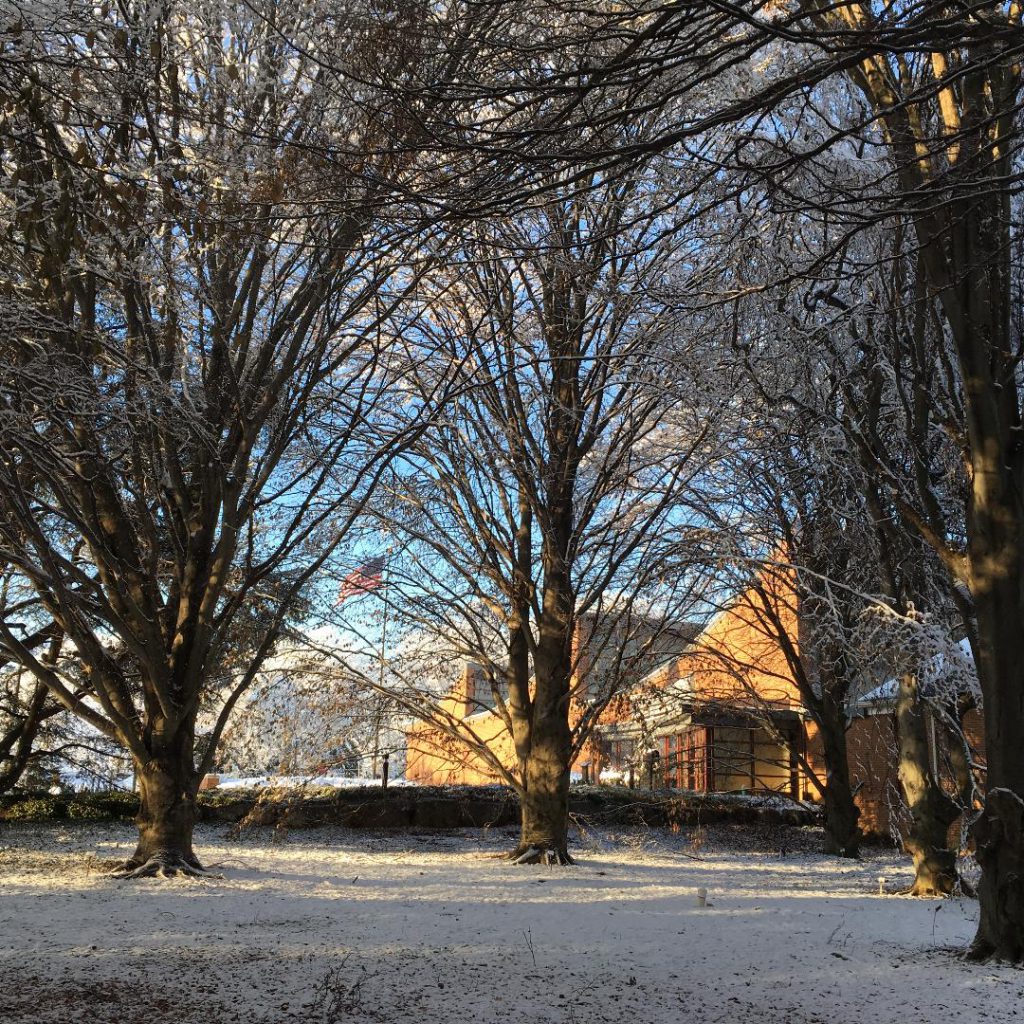
This small grove of mature European Beeches includes six different cultivars: (1) Copper or Purple (‘Purpurea’); (2) Oakleaf (‘Quercifolia’); (3) Tricolor (‘Roseo-Marginata’); (4) Fernleaf (‘Heterophylla’); (5) Columnar (‘Dawyck’); and (6) Weeping (‘Pendula’).
This grove has been artistically studied by local photographer Kristin V. Rehder, who in 2018-19 mounted the exhibit, “The Beech Grove.” The exhibit, the Arboretum said, “captures the evocative beauty and mystery of one of Lancaster’s hidden gems.” Rehder herself noted that “images of the beeches encourage our understanding of the mysteries of nature, the trees’ perseverance, the beauty we can foster within our city, and the im- portance of passing these lessons on.”
[For remarks on the importance of this species regarding its nuts and also modal fabric, see separate entry on the Euro- pean Beech at Elmwood Terrace.]
This amazing species, introduced to the United States in the early 1800s, forms a symbiotic relationship with fungi that enhance uptake of water and nutrients from the soil.








